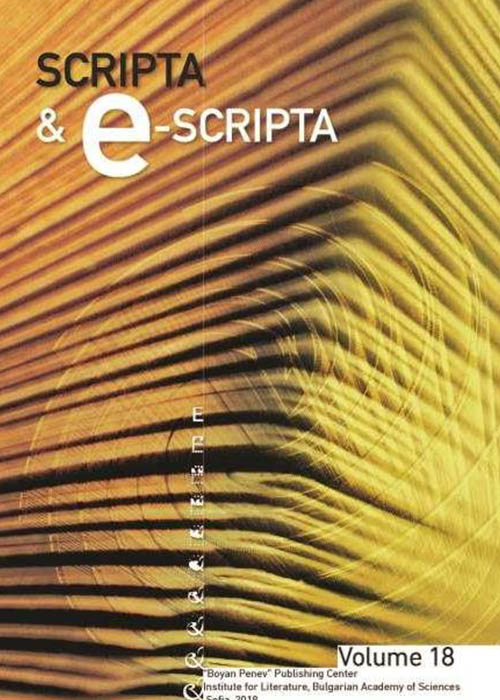Semantics of the Book’s Macro-Compositional Level? A Visualisation Method of Analysis

- Author(s): Dilyana Radoslavova
- Subject(s): History // Language studies // Language and Literature Studies // Cultural history // Studies of Literature // Middle Ages // Modern Age // Historical Linguistics // Comparative Linguistics // 13th to 14th Centuries // 16th Century // 17th Century // Philology // Translation Studies //
-
Published by: Institute for Literature BAS

- Print ISSN: 1312-238X
- Summary/Abstract:
The publication opens for discussion an approach to macrostructural analysis of certain calendar miscellanies with selected readings which belong to the Medieval Balkan tradition. The author proposes that the selection of feasts and saints’ commemorations, as well as the order of the corresponding texts might be interpreted as determined by certain overall theme(s) / thematic fields and could be „read“ on the level of the book’s content. This approach was encouraged by the outcomes of a study on the calendar-thematic composition of Damaskenos Studites’s Thesauros and its transformations in Bulgarian literary tradition in the 16th-18th century. Aiming at a search for similar preceding models, the survey makes comparison on macro-compositional level between some panegyrica, such as Mihanović Homiliar and Jagić Zlatoust of the late 13th – early 14th century, the 1358/59 Miscellany of German, and the 16th-century Panegyricon No. 85 from the Bulgarian Academy of Sciences. In addition, the study explores the relevancy of a method for visualisation, which can be supportive of a thematic analysis.
Journal: Scripta & e-Scripta vol. 14-15, 2015
-
Page Range: 251-280
No. of Pages: 30
Language: English - LINK CEEOL: https://www.ceeol.com/search/article-detail?id=418011
-
Dilyana RadoslavovaInstitute for Literature, Bulgarian Academy of Sciences, Sofia, BulgariaDescription
Dilyana Radoslavova, currently a Senior Assistant Professor at the Department of Old Bulgarian Literature, Institute of Literature, Bulgarian Academy of Sciences. She has a MA degree in Bulgarian Philology (St Kliment Ohridski University of Sofia, 1995) and a PhD degree in Bulgarian literature (Institute of Literature, BAS, 2010). She specialises in the fields of the history of the Mediaeval Slavonic letters, Cyrillic palaeography and codicology, and creating electronic resources in palaeoslavistics. She is a co-compiler of Cyrillic Books Printed before 1701 in British and Irish Collections: A Union Catalogue. London, 2000 (with R. M. Cleminson, C. G. Thomson, and V. A. Voznesenskij) and an author of 17th-century Bulgarian Letters: Centers, Scribes, Repertoire (Studia Mediaevalia Slavica et Byzantina 6). Sofia, 2020.
-
SUBJECT: History // Language studies // Language and Literature Studies // Cultural history // Studies of Literature // Middle Ages // Modern Age // Historical Linguistics // Comparative Linguistics // 13th to 14th Centuries // 16th Century // 17th Century // Philology // Translation Studies //KEYWORDS:
-